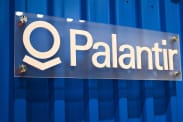To the Editor:
Avi Salzman was correct to warn about the escalating costs of wind power, but his warnings were too mild (“Trouble in the Wind,” Cover Story, July 21). Salzman pointed out that many of the leading offshore wind companies are European. He might have asked some European industry experts for their thoughts.
One such industry expert, Capell Aris, recently penned an article for London’s Daily Telegraph titled “Britain’s Green Energy Disaster Should Be an Awful Warning to Americans.” He relied on experience rather than long-range hypothetical plans, and his numbers are far less optimistic than Salzman’s.
He writes, “Extra services like very rapid-response gas generators, required in order to make it possible to connect renewables to the grid, add…to renewables’ cost. Thus, the true cost to the customer of offshore wind generators is actually [$255 to $280 per megawatt-hour],” much higher than Salzman’s estimate of $100/MWh that he argues will result from a trend of costs going down.
Perhaps this explains these European companies canceling wind contracts?
Dan Munson
St. Paul, Minn.
To the Editor:
Every watt of offshore wind power will require backup by a different power source. In other words, the capacity must be built twice. Your cost statements need to account for backup. Rate payers are in for a shock.
David Peters
On Barrons.com
On VCs and India
To the Editor:
As an ex-Brit, I liked the cricket reference in the Up & Down Wall Street column, but I question both the difficulty for tech companies to get acquired (“Venture Capital’s Funk Bodes Poorly for Private Company Valuations”) and Apple’s opportunity in India (“This Country Could Be Apple’s Next Big Opportunity,” July 21).
In the past three years, Alphabet, Meta Platforms, Apple, and Microsoft acquired 83 companies. Hardly a dead mergers-and-acquisitions market. In India, Apple will find revenue growth hard to achieve. Samsung and four Chinese smartphone companies are already well established with 70% of the market. Apple is in seventh place.
David North
Denver
To the Editor:
Eric J. Savitz’s venture-capital article is well written and informative and exposes a somewhat hidden weakness in the economy—a weakness that could hemorrhage tech jobs and curb some of the excitement around tech stocks.
H.P. Gates
On Barrons.com
Limited Labor Force
To the Editor:
This article started out perfectly when it mentioned the flameout of the last hot new things, Peloton and Beyond Meat (“American Manufacturing’s Revival—and 7 Stocks to Play the Trend,” Streetwise, July 21). But it then ignored the largest impediment to a reshoring or even a revival of U.S. manufacturing: our limited labor force.
In the past two decades, we sent tens of millions of jobs overseas and created tens of millions more overseas that never were in the U.S. But we have only about five million unemployed workers in the U.S. and don’t have the workers to handle the demand. Our companies are growing much faster than our population. Add in baby boomer retirements and lower immigration rates, and we can’t handle reshoring. Why do you think the Federal Reserve is trying to slow the economy? Its real target is the tight labor market. Near shoring, or reshoring to friendlier locations, is a better choice.
Jeremy Blum
Cary, N.C.
Take Heed
To the Editor:
“The Fed Could End the Stock Market’s Rally Anytime It Wants To” (The Trader, July 21) reminds readers that darker days may well lie ahead and that they should take warning and batten down the hatches. I’m buying Treasuries and enjoying a solid 5% yield.
J. Wallace
On Barrons.com
Dividend Talk
To the Editor:
One doesn’t have to look far for examples of corporate boards cutting dividends soon after their executives emphasize the importance of maintaining them (“Are AT&T and Verizon’s Dividends Safe? What the Math Says,” Income Investing, July 19). Investors beware. Talk of maintaining a dividend best not be construed as actually sustaining the current dividend. It must be taught in business schools that increased stock prices and dividend yield are inversely correlated. The former’s rise is limited if the latter is too high. Although more cash is freed up when dividends are significantly reduced, it often signals distrust that extra money won’t be wisely spent. The familiar result: a lower payout coupled with even a lower stock price.
Thomas D. Finnigan
Mount Vernon, Va.
Buy, Hold, and Reap
To the Editor:
Arthur J. Gallagher is an impressive company that few people have ever heard of (“Barron’s Stock Pick: This Insurance Broker’s Stock Is Anything but Boring,” July 21). The yearly record of higher earnings, dividends, and stock price are what investors’ dreams are made of. Its stock price seems a bit rich for a financial, but this is one that you just hold your nose and buy, put away forever, and be rewarded.
Gerald Schall
On Barrons.com
Send letters to: mail@barrons.com. To be considered for publication, correspondence must bear the writer’s name, address, and phone number. Letters are subject to editing.





